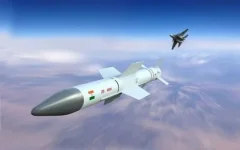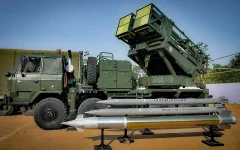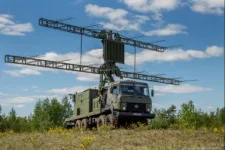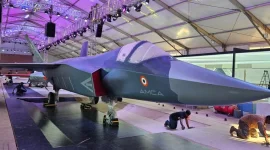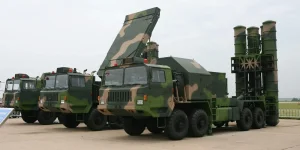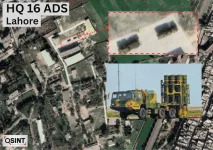In the wake of significant military losses during the May 2025 conflict with India, Pakistan is undertaking a critical reassessment of its air defence capabilities.
The demonstrated failure of its Chinese-supplied systems has prompted Islamabad to explore the acquisition of advanced Siper air defence missiles from Turkey, even as severe financial constraints may force it to consider another high-tech, yet unproven, Chinese system.
The impetus for this strategic review was India's 'Operation Sindoor,' launched on May 7, 2025, following a deadly terrorist attack in Pahalgam.
In the operation, Indian forces successfully executed precision strikes against terrorist camps and critical Pakistani military installations, including the Noor Khan and Rahimyar Khan airbases.
The attacks utilised a combination of stealthy SCALP cruise missiles, loitering munitions, and Israeli-developed Harpy anti-radiation drones.
Pakistan's existing air defence network, built around the Chinese HQ-16 and HQ-9 systems, proved ineffective, failing to detect or intercept the incoming threats due to what reports indicate was overwhelming Indian electronic warfare and jamming tactics.
The failure was a major blow to Pakistan's Comprehensive Layered Integrated Air Defence (CLIAD) strategy.
The HQ-9P, a variant customised for Pakistan with a stated range of over 125 km, and the shorter-range HQ-16 were supposed to provide robust protection against aircraft and missiles.
However, their inability to counter low-flying targets and resist electronic countermeasures resulted in substantial damage, including the reported destruction of an entire HQ-9 battery near Lahore. This performance has severely damaged confidence in the reliability of Chinese military hardware.
In its search for a more dependable alternative, Pakistan has turned its attention to Turkey's Siper air defence family, developed by leading Turkish defence firms Roketsan, ASELSAN, and the research institute TÜBİTAK SAGE.
These systems are seen as a potential solution to the vulnerabilities exposed during the conflict.
- Siper-1: This system is already in service and offers protection against aerial threats at a range of over 70 km. It is specifically designed with advanced electronic counter-countermeasures (ECCM) to resist jamming, a key capability that Pakistan's current systems lack.
- Siper-2: Expected to be operational by 2026, this longer-range variant will engage targets up to 150 km away, positioning it as a direct competitor to the HQ-9 but with superior technology to handle stealth and electronic warfare threats.
However, transitioning to a new Turkish system would present significant challenges, requiring costly and complex updates to Pakistan's existing command and control infrastructure, which is predominantly Chinese.
A major barrier to acquiring the advanced Turkish systems is Pakistan's precarious economic situation. The nation is heavily reliant on loans from the International Monetary Fund (IMF) and other international bodies.
With a falling tax-to-GDP ratio and increasing defence expenditure, the fiscal space for a major new weapons purchase is limited. Financial pressures have been intensified by India's opposition to new loans for Pakistan, citing concerns that funds are diverted for military use.
According to a warning from Moody's, any escalation in regional tensions could further jeopardise Pakistan's fragile economy.
These financial realities make the Chinese-made HQ-19 missile system an unavoidable, if contentious, alternative. The HQ-19 is a strategic anti-ballistic missile system, often compared to the American THAAD system, designed to intercept ballistic missiles at high altitudes.
With a reported range of up to 3,000 km, it could theoretically provide a shield against India's arsenal of BrahMos supersonic cruise missiles and Agni-series ballistic missiles.
However, this interest is tempered by deep-seated skepticism. While Chinese sources have reportedly attributed the failure of the HQ-9 and HQ-16 to poor training and operational errors by the Pakistani military, this has strained trust between the two allies.
Given that the HQ-19 shares a technological lineage with the failed HQ-9, Pakistani officials are wary of its promised capabilities.
The fear is that despite its impressive on-paper specifications, the HQ-19 could suffer from the same real-world vulnerabilities that allowed Indian forces to penetrate Pakistani airspace with impunity, leaving Pakistan at a critical crossroads between its urgent defence needs and its stark economic limitations.

